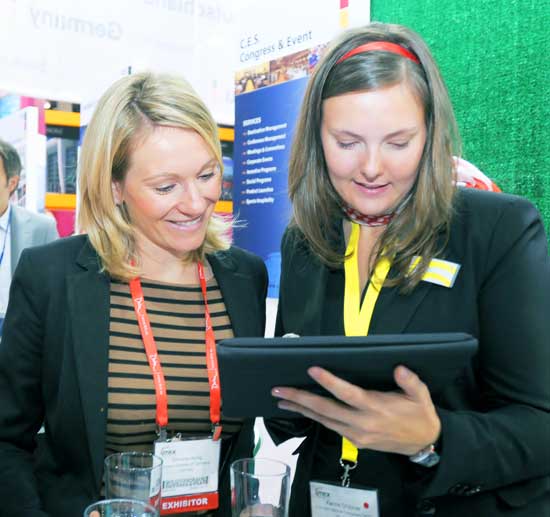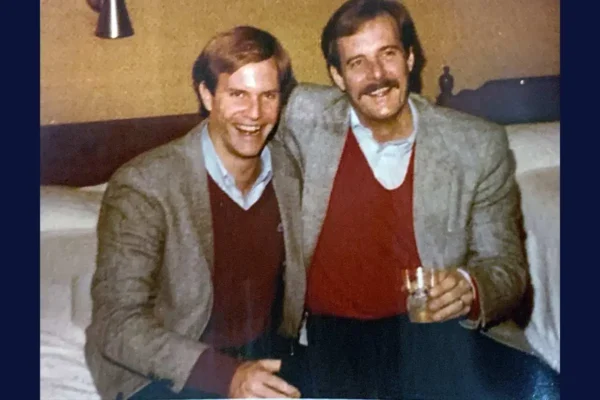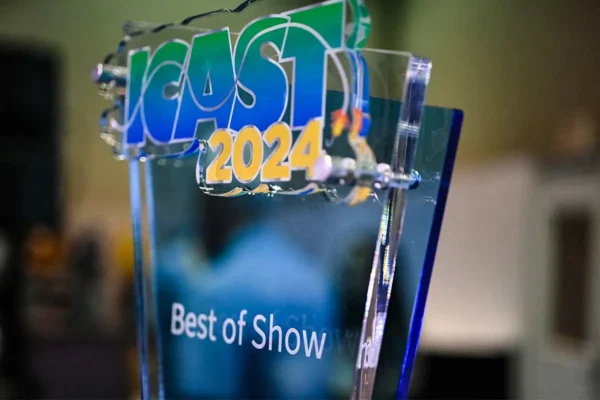Most event technologies are like reality TV stars. They rocket to fame overnight and are sidelined almost as quickly. Not so with computer tablets, according to Corbin Ball, a renowned event technology guru (more than 9,000 fans worldwide read the Bellingham, Washington-based consultant’s e-newsletter, “Tech Talk,” every month).
“The potential for tablets is incredible,” said Ball. “The technology is likely to have as big an impact on the exhibit hall as any technology ever has, because tablets bring the full power of computing to the tradeshow floor.”

In less than two and a half years, tablets have gobbled up 10 percent of the computer market, making them history’s fastest-growing technology. Two benefits explain why. The first is screen size.
“You have more real estate, so you can do more things,” said Ball. “You can use a tablet as a portable event binder, use it to make sales presentations, or use it as an interactive kiosk — things you couldn’t do with devices that had a smaller screen.”
The second benefit is the proliferation of apps. To be sure, tablets are “light, thin, easy to carry and intuitive, but apps are what make tablets powerful,” said Ball.
While the consumer and professional markets for apps are vast, apps that target users in the exhibition industry today are relatively few.
“The apps that are particularly helpful to exhibit managers right now are the document management and annotation tools that spare you from carrying around a whole bunch of paper,” said Ball. “It’s fundamental to want to digitize paperwork. A piece of paper is a white flag of inefficiency.”
Many of these paper-saving apps are low-cost or free. Ball especially likes the following:
- OneNote, Microsoft’s document-gathering and collaboration tool. OneNote lets users collect handwritten and typed notes, drawings, screen shots and audio clips and share them with other users over the web.
- Evernote, a robust alternative to OneNote. Evernote allows users to archive, edit, sort and export materials in the form of a notebook. A “note” can be a typed or handwritten document, webpage, photograph or voice memo. A note can also have file attachments.
- PDF Annotate, a handy mark-up tool. PDF Annotate lets users open a PDF and add, edit, underline, highlight or strike out items, then save the file with the annotations embedded in it.
- Penultimate, a note-taking app. Penultimate allows users to draw and doodle on their tablets. When paired with a touch stylus, the app can scale to the professional demands of designers and engineers.
- Dropbox, a cloud hosting service. Dropbox lets users create a special folder on their individual computers which the app synchronizes to all other users’ folders, so each contains the same content. Files placed in the folder are accessible through a website.
- Asana, a collaborative project management tool. Designed to help individuals and teams manage to-do lists, Asana was created by two former Facebook employees who believe organizations need “a single version of the truth” to work productively.
Productivity-boosting apps like these offer a way for exhibitors to whet their appetites for the thousands of tradeshow-centered apps that are just around the corner.
If you’re not yet using tablets every minute of every show, you soon will be.
“The process of hunting around and finding the app that perfectly suits what you want to do in your exhibit is going to become very easy,” said Ball.
That’s because the supply of show-centric apps is poised to explode.
“The trend is unmistakable—there’s going to be an app for everything,” said Ball. “It’s due in large part to the fact that free online developer kits are making app development as simple as drag-and-drop.”
Show organizers have already jumped on the bandwagon, providing attendees apps for way-finding, exhibitor appointment-setting and collateral requests.
Exhibitors aren’t far behind. Ball predicts the use of tablets for interactive display will soon be found everywhere on exhibit floors.
“Tablets have huge potential for their ability to engage attendees and drive them to interact with you,” said Ball. “I just attended a show where exhibitors had walls of iPads that they were using for interactive display. Attendees could come into the booth and take their own pictures and add drawings and notes. A whole buzz was created on the show floor around these gorgeous displays.”
Survey-taking with tablets will be another killer app, Ball thinks. Polling attendees with tablets is a simple, natural use for the devices.
Lead retrieval will be tablets’ third prevalent use.
“Lead retrieval with tablets—especially when the tablets are NFC enabled — opens a whole range of new attendee engagement and information exchange activities,” said Ball.
But these three key uses won’t stand alone.
“All these uses of tablets will be linked together. That’s the beauty of it. With web services, all the apps can work together,” said Ball.
Bob James is director of marketing for ITN International, an event analytics company known for pioneering the use of NFC (short-range wireless) within the exhibitions industry. With operations in China, France, the UK and the US, ITN International provides exhibitors—more than 150,000 of them—with innovative lead management solutions based on NFC.





























